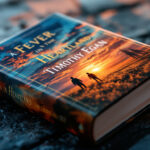How to Self-Publish a Book – Step-by-Step Guide for Aspiring Authors
Publishing a book doesn’t have to mean waiting for agents or pleasing traditional publishers. Thanks to self-publishing, writers now have the freedom to turn their ideas into reality on their own terms. It’s a path that gives you full control over your content, design, and royalties, letting you maintain your creative vision while reaching your readers directly. Whether you dream of holding your novel in print or sharing your expertise through an eBook, self-publishing has become an accessible and rewarding option for authors at any stage of their journey.
Preparing Your Book for Self-Publication
Publishing your own book is a rewarding and empowering process, but creating a professional, polished product takes preparation. From perfecting your manuscript to formatting it for both print and eBook platforms, each step counts in ensuring your work stands out in a crowded market. Here’s how you can prepare your book for self-publishing success.
Drafting and Revising Your Manuscript
The heart of your book is its content. Writing a manuscript is only half the battle; refining it is just as crucial. Once you’ve completed your first draft, step back from it for a few days. This break helps give you a fresh perspective during revisions.
When you return to your manuscript, focus on:
- Clarity: Are your ideas expressed clearly? Can a reader unfamiliar with your content follow along without confusion?
- Consistency: Double-check that your tone, tense, and point of view are uniform throughout the book.
- Engagement: Does the opening grab attention? Are your chapters paced well to hold interest?
Look at your manuscript as a reader would. Highlight areas where sentences feel clunky or chapters drag. Reading your book aloud can also help pinpoint issues with rhythm and flow.
For added structure in refining your work, tools like Scrivener offer organizational features to manage chapters, character notes, and more, ensuring the editing process stays smooth.
Professional Editing Options
Even the sharpest writers need a second pair of eyes. Hiring a professional editor can elevate your book from “good” to “great.” Editors focus on different aspects of your book, offering specialized expertise:
- Developmental Editing: This in-depth review focuses on the big picture. Developmental editors provide feedback on structure, character development, and narrative flow.
- Copy Editing: Here the focus shifts to grammar, sentence structure, word choice, and style.
- Proofreading: The final polish. Proofreaders catch spelling mistakes, typos, and formatting inconsistencies.
While self-editing tools like Grammarly or ProWritingAid can be helpful, professional editors bring human insight and creativity that AI can’t match. Services like BookBaby and Scribendi connect writers with skilled editors who specialize in different genres.
Think of editing as an investment. A polished manuscript reflects your dedication and increases your credibility with readers.
Formatting for Different Mediums
Formatting is where your manuscript begins to look like a finished book. Whether you’re publishing an eBook, a printed book, or both, the formatting process can’t be overlooked. Sloppy formatting can turn readers away, regardless of how great your content is.
When formatting, focus on these essentials:
- Print Formatting:
- Margins and gutter size should fit the chosen print dimensions.
- Consider readable fonts like Times New Roman or Garamond for body text.
- Ensure proper alignment for chapter headers and page numbers.
- eBook Formatting:
- Use simple fonts that display well on digital screens.
- Add clickable links for the table of contents and reference sections.
- Prepare files in ePub or .mobi formats to ensure compatibility with eReaders.
Tools like Vellum simplify the formatting process, offering professional templates for both print and eBooks. Alternately, Kindle Direct Publishing provides free resources and step-by-step guides for formatting your manuscript.
Want to save time? Services such as Draft2Digital can handle formatting for free if you’re publishing through their platform.
Proper formatting ensures your book reads and looks professional, whether on paper or screen. Take the time to compare templates, experiment with layouts, and, most importantly, proof your final design before hitting “publish.”
In self-publishing, details matter. A polished manuscript, professionally edited and properly formatted, sets you apart from amateurs, creating a reading experience that leaves readers wanting more.
Choosing the Right Self-Publishing Platform
Selecting the perfect self-publishing platform is a crucial step in your journey as an author. The right platform can mean the difference between a book that captures readers’ attention and one that gets lost in the sea of publications. Each platform serves different needs, so understanding your goals—whether it’s maximizing reach, ease of publishing, or earning higher royalties—will help you make an informed choice.
Amazon Kindle Direct Publishing (KDP)
Amazon Kindle Direct Publishing (KDP) remains the go-to option for most self-published authors, and for good reason. As the world’s largest online retailer, Amazon provides authors with unparalleled access to millions of readers, making it the most dominant player in the self-publishing market.
Here are some of the reasons why KDP is the top choice for first-time authors:
- Accessibility: KDP is incredibly user-friendly. Whether it’s formatting your manuscript or setting up your book for print or digital, KDP’s step-by-step process simplifies the publishing journey. First-time authors often find it to be the least intimidating platform.
- Global Reach: Publishing on KDP grants your book entry into Amazon’s massive global marketplace. With millions of daily visitors, it offers one of the largest potential audiences for your work.
- Royalties: KDP gives authors flexibility in royalty options—choose between 35% or 70%, depending on pricing and exclusive participation via KDP Select.
- KDP Select: Enrolling in KDP Select gives exclusive perks like Kindle Countdown Deals and access to the Kindle Unlimited program, allowing readers to discover your book through a subscription service.
Like any publishing method, KDP has its drawbacks. For instance, KDP Select requires exclusivity for your eBook, meaning you can’t publish it digitally elsewhere if you participate. However, the benefits, especially for emerging authors eager to establish a readership, often outweigh these limitations. For detailed insights on KDP’s pros and cons, check out this KDP overview.
Exploring IngramSpark and Draft2Digital
For authors looking to expand beyond Amazon, platforms like IngramSpark and Draft2Digital offer compelling alternatives. While these platforms may not have Amazon’s built-in audience, they shine when it comes to wider distribution options.
IngramSpark
IngramSpark stands out for its vast distribution network, making it ideal if your goal is to see your book in libraries or physical bookstores. Unlike KDP, which primarily focuses on Amazon, IngramSpark connects your titles to over 40,000 retailers worldwide.
Why might IngramSpark be the right choice for you?
- Professional Distribution: IngramSpark’s core strength lies in its ability to get your book listed in major online and offline stores. From Barnes & Noble to independent bookstores, they make reaching a broader audience feasible.
- Print-On-Demand: With print-on-demand services, you don’t need to worry about warehousing your physical books. This option eliminates upfront printing costs.
- Customization: The platform allows for greater control over book specifications like size, format, and binding type. If you’re creating a specialty book or considering a hardcover edition, IngramSpark excels in customization.
While its benefits are significant, IngramSpark does come with costs. Unlike KDP, which offers free setup, IngramSpark charges a setup fee and additional fees for making revisions to published books. However, for authors aiming for industry-standard distribution, this expense is often justifiable. Dive deeper into IngramSpark’s benefits here.
Draft2Digital
Draft2Digital is another excellent platform, particularly if you’re looking for ease of use and wide eBook distribution. Draft2Digital integrates with a variety of retailers, including Apple Books, Google Play, and Kobo, making it a strong contender for authors who want to avoid exclusivity.
Some key advantages of Draft2Digital include:
- No Setup Fees: You upload your manuscript for free, and the platform takes a small percentage of your royalties only after your book starts earning money.
- Automation: Draft2Digital simplifies the formatting process, converting your manuscript into a professional eBook layout within minutes. According to Draft2Digital reviews, its intuitive interface is one of the easiest to navigate.
- Universal Book Links (UBLs): These links simplify marketing by giving readers access to your book on multiple platforms via a single URL, making it easier to promote your work.
One of Draft2Digital’s standout features is its royalty transparency. They take a flat 10% of your eBook’s retail price, ensuring clarity in revenue sharing. However, unlike KDP and IngramSpark, Draft2Digital is eBook-focused and doesn’t cater much to authors seeking physical distribution.
If simplicity and multi-platform availability are on your checklist, Draft2Digital might be your ideal partner. For an in-depth analysis of their services, check out this review.
Both IngramSpark and Draft2Digital offer unique advantages, providing you with options to diversify your distribution and reach. Understanding what each platform offers—and identifying your priorities as an author—can help you strategically place your book in front of the right audience.
Designing Your Book’s Cover and Interior
Whether it’s someone’s first glance on a shelf or a scroll through an online retailer, your book’s cover and interior layout are pivotal in creating a strong first impression. A compelling design not only draws readers in but also reflects the quality and effort poured into your work. Here’s why thoughtful design matters and how to ensure your book looks outstanding inside and out.
The Power of an Eye-Catching Cover
We all judge books by their covers—literally. A well-designed cover serves as your book’s handshake, telling readers, “Here’s what to expect.” Your cover needs to grab attention in less than three seconds, whether sitting on a bookstore shelf or displayed on a digital platform.
Why is an eye-catching cover essential? It’s all about positioning your book as professionally made amongst thousands of options. A polished cover builds trust instantly, enticing potential readers to discover what’s inside. According to IngramSpark, the design should visually represent your book’s tone, genre, and audience. For instance, bold typography suits thrillers, while soft illustrations may be more fitting for romance novels.
Hiring a professional designer is often the best investment here. Platforms like Reedsy provide access to vetted experts experienced in crafting covers that sell. When collaborating, ensure your designer understands your vision. Share details about the book’s themes, comparable covers from your genre, and any essential elements or symbols.
If your budget is tight, affordable options like Fiverr’s Book Cover Designers connect you with freelance creators who can still provide compelling results. While DIY tools exist, such as Canva, always remember that readers can spot unprofessional designs—they can cost you sales.
Engage your audience with bold colors, balanced composition, and fonts that reflect the essence of your content. And if in doubt? Test different designs with a focus group or via social media polls.
Interior Layout and Formatting
While the cover draws readers in, the interior must hold their attention. Think of your book’s inside pages as the uncredited co-author: if they’re hard to navigate or visually off-putting, readers may abandon your work midway.
Creating a professional interior layout is about ensuring readability, flow, and consistency. JulieKaren Publishing stresses that formatting isn’t just decorative; it’s a functional component that lets your words shine.
For print books, focus on:
- Setting comfortable margins and gutters for easy page-turning.
- Choosing readable fonts like Garamond, Baskerville, or Times New Roman for the body text.
- Breaking up sections with proper headings, blank spaces, or thematic dividers.
- Maintaining consistent alignment for chapter titles and page numbers.
For eBooks, adapt your formatting to interactive digital platforms:
- Use scalable fonts designed for screens, ensuring readability on devices of all sizes.
- Embed clickable navigation links for your table of contents.
- Avoid fixed layouts for flowing text; this ensures a seamless experience for eReaders.
If design feels outside your expertise, hiring a professional formatter through services like I Need a Book Cover or leveraging tools like Vellum for user-friendly templates can save time and frustration. Alternatively, guides from IngramSpark or Kindle Direct Publishing walk you through steps on balancing style and function for different platforms.
Lastly, before releasing your book, proof your interior design rigorously. Print proof copies—sometimes phrasing that looks perfect on a screen feels cluttered on paper. Layout matters as much as the words you’ve written, creating a cohesive reader experience that turns browsers into fans.
Marketing Your Self-Published Book
Publishing your book is only the first step. If you want your work to reach readers, marketing is crucial. A well-thought-out strategy can help you stand out in a saturated market. Let’s explore key tactics to promote your self-published book effectively.
Understanding Your Target Audience
Who are you writing for? Knowing your target audience is the foundation of any successful marketing campaign. After all, how can you sell a book if you don’t understand the people likely to buy it?
Start by identifying your ideal reader. Consider demographics like age, gender, location, and even their interests and habits. For example, if you’ve written a young adult fantasy, your audience might include teens interested in magical worlds, as well as adults who enjoy nostalgic storytelling. Tools like surveys or social media polls can help fine-tune this understanding.
Once you’ve defined your audience, tailor your messaging to align with what matters most to them. Are they drawn to gripping thrillers or heartwarming romance? Use language, imagery, and marketing channels that connect with their preferences. For practical advice on finding your audience, check out this guide on identifying your readership.
An effective marketing strategy isn’t “one-size-fits-all.” By understanding your readers deeply, you can speak their language and deliver personalized outreach that converts browsers into buyers.
Building an Online Presence
In today’s digital world, your online presence is often your readers’ first impression of you. Creating the right kind of visibility can make your book accessible to people across the globe.
Here are some ways to establish your online identity:
- Social Media: Platforms like Instagram, Twitter, and TikTok allow you to grow a following and engage directly with potential readers. Share behind-the-scenes moments, post visuals tied to your book, or hop on trending hashtags that suit your genre. Need help figuring this out? This blog on building a platform breaks it down nicely.
- Author Website: Your website is your online headquarters. It should include an engaging bio, a list of your books, and links to buy them. Want to go a step further? Add a blog where you discuss topics your audience cares about. Learn more strategies here.
- Email Newsletters: Email lets you connect on a personal level. Offer readers something of value for signing up, like a free story or exclusive content. Monthly updates about your writing, life, or upcoming projects can keep them engaged long after they’ve bought your book.
Consistency is key. Engaging regularly with your audience builds your author brand and encourages readers to feel involved in your journey.
Leveraging Paid Advertising
While organic reach is valuable, supplementing it with paid ads can propel your book into another level of visibility. Platforms like Amazon Ads and social media offer targeted options that ensure your promotion dollars are well-spent.
- Amazon Ads: As the largest online retailer for books, Amazon allows you to advertise directly to people searching for their next read. By using sponsored ads effectively, you ensure your book appears at the top of search results for relevant keywords. For full insight, explore this guide on using Amazon Ads.
- Social Media Advertising: Platforms like Facebook and Instagram provide the tools to target specific demographics. For example, you can create ads aimed solely at women aged 25–40 who are fans of romance novels.
- Budget-Friendly Strategies: Unsure about spending too much upfront? Start small. Allocate $5–10 daily and test different ad formats to see what resonates most with your audience. This approach minimizes risk while maximizing your learning curve.
Using paid advertising doesn’t just boost visibility—it also helps hone your marketing strategy by providing detailed analytics on what performs well. To dive deeper, check out this guide on paid advertising for authors.
Connecting with readers doesn’t happen by accident. By understanding your audience, building an online presence, and strategically leveraging advertising, you can give your self-published book the attention it deserves.
The Economics of Self-Publishing
Self-publishing opens the door to creative liberty, but with it comes the challenge of understanding the economics involved. From acquiring ISBNs to allocating funds for editing and marketing, knowing where and how to spend your money can make the difference between financial strain and a successful launch. Let’s explore the costs tied to self-publishing and how to create a budget that works.
Understanding ISBNs and Distribution Costs
Every book needs its unique identifier—a code that distinguishes it in libraries, bookstores, and online platforms. This is where ISBNs (International Standard Book Numbers) come in. But do you really need one? If you’re serious about publishing professionally and expanding your reach, the answer is yes.
ISBN costs vary depending on your location and publishing goals. In the U.S., purchasing a single ISBN through Bowker can cost as much as $125, though bundles lower the per-unit price significantly. For instance, getting 10 ISBNs costs around $295, which is a smarter choice if you’re planning additional formats like eBooks, paperbacks, or hardcovers. Opting for platforms like Amazon KDP can save you money, as they provide a free ISBN; however, it limits your ability to publish outside their ecosystem under that code.
Distribution fees also play a pivotal role. Platforms like Amazon KDP offer royalty rates of 35% to 70%, but be aware of printing deductions. For third-party distributors such as IngramSpark, costs can include setup fees ($49 per title) and royalties around 40-45%. While IngramSpark gives you access to physical bookstores and libraries, these additional costs should be weighed against potential earnings.
Additionally, expect eBook distribution services like Draft2Digital or Google Play to take a percentage of every sale (generally 10-30%). Knowing these breakdowns ensures you won’t be caught off guard when royalties or distribution fees are deducted.
Budget Planning for Self-Publishing
Publishing comes with upfront costs, but planning ahead helps minimize surprises. Start by creating a detailed budget that categorizes essential and optional expenses. Think of it as building a house; the foundation—editing, formatting, a cover—must be solid before you can move in.
Here’s how to prioritize your spending:
- Editing (Critical but Costly): Quality editing should never be skipped. Developmental editing can cost between $0.07–$0.15 per word, while copy editing typically runs $0.02–$0.05 per word. Proofreading, the final step, costs less—around $0.01–$0.03 per word. Hiring pros is an investment in credibility.
- Cover Design: You can hire freelancers or find budget solutions on platforms like Fiverr, but you’ll typically pay $100–$500 for professional input. Designing on a shoestring budget? Free tools like Canva can offer interim solutions, but tread carefully.
- Formatting: Formatting software like Vellum ($199) simplifies creating eBooks or print-ready PDFs. Alternatively, use print-on-demand services that include formatting in their setup fees.
- Marketing and Promotion: Allocate at least 20% of your total budget to marketing. Low-cost strategies include setting up a basic author website or newsletter (estimated setup: $50–$100 annually). Paid ads via social media platforms like Facebook or Amazon range from $5–$15 a day, but cautious testing keeps costs manageable.
- ISBNs and Distribution: Include licensing fees and distributor cuts in your calculations to stay realistic about profit margins.
Pro Tip: If funds are tight, focus on the essentials first. For example, you might forego a hardcover edition to invest more in marketing. The key is flexibility—tailor your spending to areas that amplify your book’s reach and quality.
While self-publishing can feel expensive upfront, the key to managing costs is thoughtful planning. With a realistic budget, you can prioritize quality while maximizing your chances of success.
Conclusion
Self-publishing is a mosaic of many moving parts, but it’s entirely achievable with focus and patience. By breaking the process into manageable steps—writing, editing, designing, publishing, and marketing—you set yourself up for triumph even in a crowded market.
Each step helps your book shine professionally, whether it’s a captivating cover, sharp editing, or an engaging marketing strategy. Remember, you’re not just launching a book; you’re creating an experience for your readers. The effort you invest in quality radiates through every page.
Take things one phase at a time. Progress builds momentum, and with consistency, you’ll reach your audience. Profitability and personal satisfaction aren’t distant dreams—they’re within your grasp. So, start today, and let your story find its way into the world.







